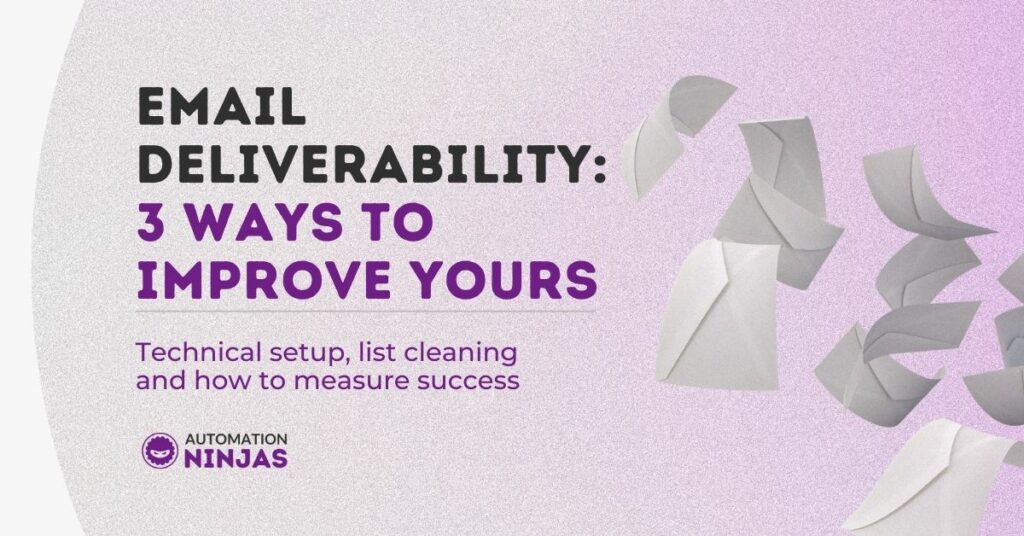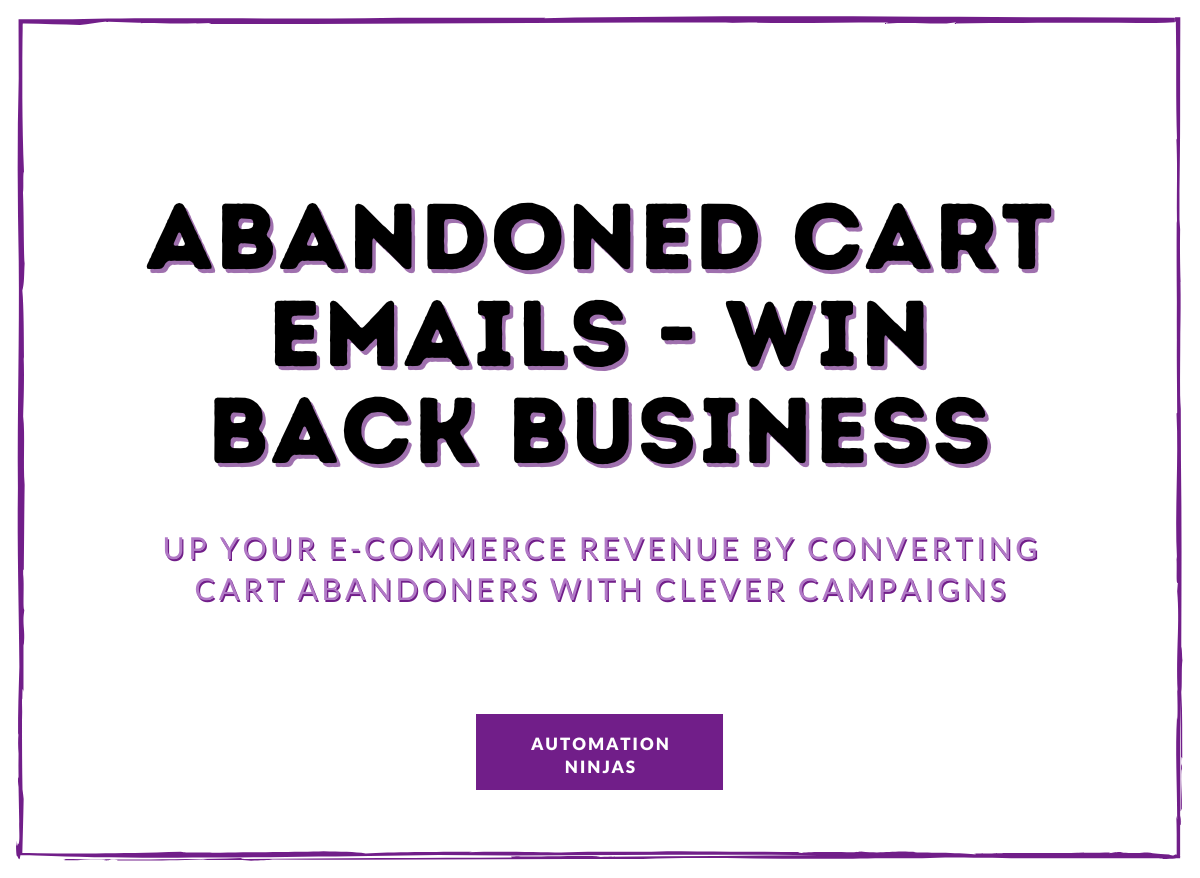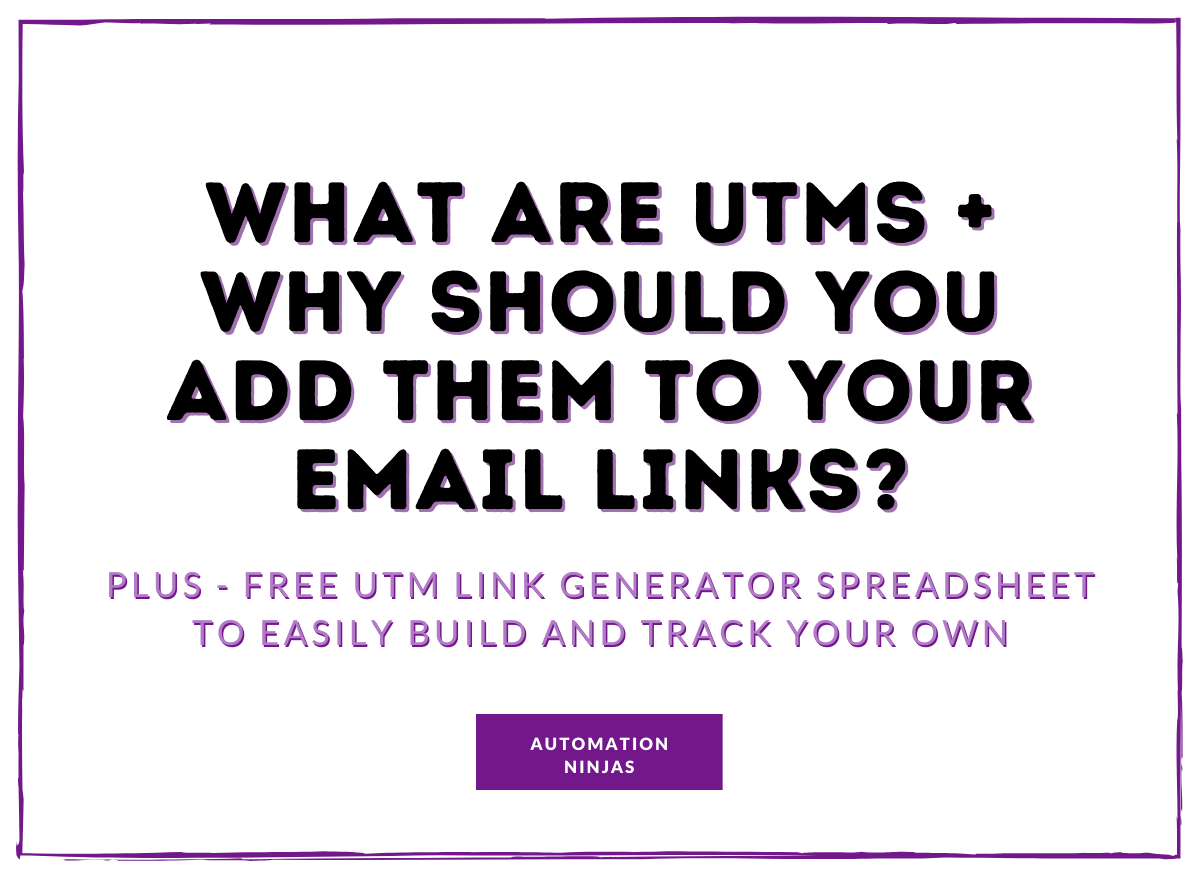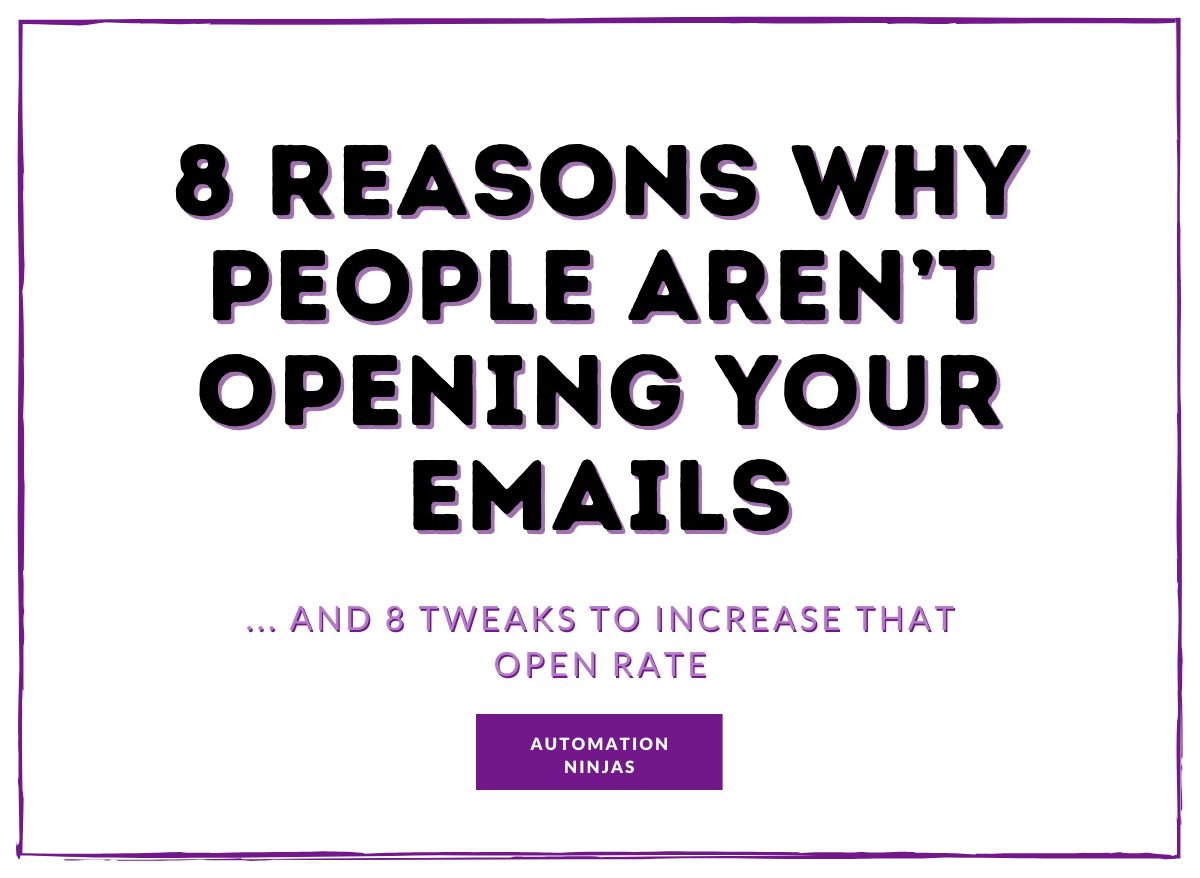Most of you will have an understanding, however basic, of what affects your email deliverability.
Spam filters, source of email and email content all contribute to how “deliverable” your email is in the big, bad email world. (psst: If this is news to you, have a read of our blog: Email Deliverability - Stop Ignoring It first!)
Despite this, most people never think to check their email deliverability. I know it seems like a bit of a snooze fest - because let’s be serious, writing the emails and watching people click through is WAY more exciting than diving into deliverability.

But it’s one of those things in life that’s boring but necessary.
Like cleaning the dishes. I despise doing the dishes but I don’t let the dirty plates rule my kitchen, do I? (please don’t look in my kitchen).
If I ignore the dishes eventually my kitchen will become unlivable. And then the task is a much bigger problem than it was to begin with.
Same goes for email deliverability. If you don’t take it seriously and check on it regularly, eventually you’ll find your deliverability issues mounting up and your emails won’t be making the impact you want them to.
So don’t let your email deliverability problems pile up like the dishes. Let’s make improvements now.
How to improve email deliverability
Improving your email deliverability comes in 3 parts.
- 1Measuring email success
- 2Technical setup
- 3List cleaning.
Each of these parts used together make for a super duper email deliverability improvement machine!
Let’s go through each part.
1 - Measuring email deliverability success

First things first. Determine how well your email deliverability is currently..
There are a few stats you’ll want to look at for this:
How many emails are you sending? - Gather information for how many emails you are sending daily, weekly and monthly. And I mean all emails whether standalone broadcasts, evergreen nurture campaigns or sales campaigns.
Contact record spot check - Pull some of your contact records and jot down what emails they have been receiving, taking notes of any days where they have had multiple emails.
Sent, Open + Click rates - Gather overall rates, as well as specific data for each campaign and broadcast.
Unsubscribe, Spam and Bounce rates - Again, gather overall rates and for each campaign and broadcast.
Email provider report - Gather data on differing stats (particularly for open and click rates) for different email providers (gmail.com, yahoo.com, aol.com, hotmail.com etc)
Engagement report - How many contacts have not engaged with your emails for 1 month, 3 months, 6 months and 12 months.
Subject line performance - Use open rates to determine what your top performing subject lines have been. Note any similarities between thes, e.g. use of emojis.
Best performing email - Use click rates and purchase conversions to determine which email was the best performing in a period of time.
You can gather all of the above information from your marketing automation software. And once you have all the data, you’ll be starting to get a picture of your email performance.
Note any large numbers, in particular:
Large spam or unsubscribe rates
Large bounce rates for certain email providers
Large numbers of unengaged contacts
All of the above can affect your email deliverability. But now we have a baseline to improve from!
2 - Technical setup for email deliverability improvement
Okay, time for techy shizz. Stay with me here.
SPF, DKIM and DMARC
Your very first step to healthy email sending is a technical step. Start by setting up your SPF and DKIM records.
SPF and DKIM are two records that you set up to let your recipients’ inbox provider know that the email is from you, and the content of the email is also from you. They are vital tools in the battle against spam and spoofing, and we should welcome them with open arms (even if they sound a bit scary).
You should have SPF and DKIM set up before you send your first automated email. An automated email is any email that is not being sent one by one by you from your gmail/outlook/ favourite email provider.
Sender Policy Framework (SPF) is an industry standard method used to prevent email forgery. It allows the owner of the domain (that’s you) to let the internet know which servers are allowed to send on your behalf. If the tool you’re using to send emails from isn’t mentioned on your SPF record, it’s potentially dodgy and should go in the spam folder… Which is why you need one. You’re not dodgy.
Domain Keys Identified Mail (DKIM) is another industry standard that authenticates your email. So this is more about letting the recipient’s server know that the content of the email has not been tampered with. It relates to the individual email, not just the tool that you’re sending emails from.
Now, here’s what you need to do:
- 1Check your existing SPF record using a tool like mxtoolbox, or dmarcian
- 2Your email service provider (ESP) or marketing platform should be able to tell you what to include in your SPF record and also in your DKIM record
- 3Give this information to your awesome webnerd.
Then there’s Domain Message Authentication, Reporting and Conformance (DMARC).
DMARC is a way of telling the email recipient’s provider what to do with emails that do not pass SPF and DKIM checks. It’s an increasingly important step and to implement DMARC, you must have SPF and DKIM set up correctly first.
DMARC comes in handy if there are known issues with platforms like gmail, yahoo etc. Sometimes platforms tighten up their security suddenly and make it hard for people to get into the inbox. When this happens, having DMARC is like having a golden ticket that helps you fly on through.
However, unlike SPF and DKIM, DMARC is a super complex bit of email deliverability tech, so it’s worth leaving to the experts. You can find more information on Returnpath or consider using a service like Dmarcanalyzer to help you get set up if you feel you need to be A+++. Your software provider will also very often have some useful information hidden in its help section.

I know. It’s techy. But it’s important. If it’s all a little much to process, speak to your dedicated web gurus or drop us a message and let’s see how we can help.
Now onto some much simpler tech improvements you can make for your email deliverability.
What email are you sending from?
You should be sending all emails from a business email address or personal domain name. If you are using a marketing platform, your email probably won’t get through if your email is johndoe@gmail.com. Your email should be john@johndoe.com or whatever your domain is. Your marketing software may mask your email - i.e. it will be sent from johnbob+gmail@infusionmail.com. Not ideal.
Plus, it looks a lot more professional if you have your own domain. That alone might entice better email engagement.
Bulk Sender Guidelines
If you send more than one email at a time, you are a bulk sender.
Each major email provider (gmail etc) has different guidelines that it works to regarding bulk senders. For example - Google has published theirs here.
Checking these on a quarterly basis will help you understand the best practices that email providers expect you to uphold, and may help with any problems you are having with a single provider, like Yahoo.
On single providers, we often notice that people can have trouble with a specific platform. Everything else gets delivered fine, but yahoo, or hotmail, won’t play nice. This can be a tell-tale sign that your email sending practices aren’t so hot and it’s worth re-reading that provider’s guidelines.
Blacklisting
If you’ve been a very naughty marketer and have been buying lists and/or spamming your poor subscribers, you may already be on a blacklist.
You should do quarterly checks on your sending domain to see if you are on a naughty list. We use mxtoolbox for this.
If you do turn up on a blacklist, you can contact the blacklisting provider and ask what steps you need to take to have yourself removed. If they ask you to prove that you’re a nice marketer, you should make sure you are following the best practices and protocols first.
Blacklisting also goes for the links that you are putting in your emails. So, if you are sending people to another address that isn’t your domain, you need to check that they are not blacklisted too!
Unsubscribes - a little word of warning
If you have been experiencing low delivery rates, low open rates and low engagement all over, and have implemented some or all of the above - Hooray! You may now get more emails in the inbox, leading to more opens, clicks and replies.
So don’t be put off if you get a spike in unsubscribes too. People may not have seen your emails in a while and may not recognise you or have forgotten what they signed up for. Hopefully they won’t mark you as spam, but if you have implemented new protocols, we suggest that you be careful about sending in bulk to people that have not engaged in some time. Which brings me to our next stage…
3 - Cleaning your list for email deliverability improvement

Quick reminder here: Your list is not just a bunch of emails. It is a list of people. And you need to treat those people with respect.
Keep your list “clean” - in other words, clearing out bad email addresses, adhering to GDPR requirements and avoiding becoming a spammer - will let the internet bots know that you are a good egg who cares about the people on your list, which will help keep your email deliverability in check.
A good, clean email list:
Should not have been bought - Bought lists have not given their consent for you to email them.
Should be double opted in (confirmed) - This will tell your marketing software that you are a responsible marketer and should mean that emails are sent from their nice clean servers instead of the mucky ones that have all their naughty corner customers on.
Other things to keep your list clean:
Unsubscribes - Are you still adding people to your campaigns that have unsubscribed? This may be showing your marketing platform that you’re not keeping an eye on list health, which could lead to restrictions on your sending. Segment your audience when adding to campaigns and set a reminder to clear out unsubscribed emails once a quarter.
Engaged - Separate your list into those that are good, bad and ugly for engagement. How many on your list have not engaged with you for 3 months, 6 months, 12 months or longer? Can you segment further into those that are your best engaged people? How many emails have they been opening, clicking?
Remove test contacts - Is your application full of years of test@test.com type contacts? If you have many of these, get them out. They could be affecting your email deliverability.
Remove duplicate contacts - If people are getting two of the same email every time you send, they will hit the unsub button faster, and maybe even the spam button!
Invalid email addresses - You may have a few of these if you haven’t been keeping an eye on who is filling out your webforms. Sometimes people use fake email addresses to get a hold of information, such as a free lead magnet. Get rid of any suss emails, including those with spelling errors, like hotmail.con or hoymail.com. You may also see random numbers and letters as a name or email address, these are most likely to be spam signups.
Bounces - Your marketing software should be able to tell you who is bouncing, and whether it’s a hard or soft bounce. Hard bounces will never reach the inbox, as they either don’t exist or have been shut down as email addresses. Soft bounces may fail once and then work next time. For instance an inbox could be full, and once cleared will accept emails again.
Not sure where to start with your email deliverability?
Not a problem! Get in touch and let’s see how we can help. We can even chat to your web guru’s directly.
Maybe you’re struggling to get your email marketing together in the first place, never mind deliverability problems? That’s where us Ninjas come in. We’d love to hear from you.




